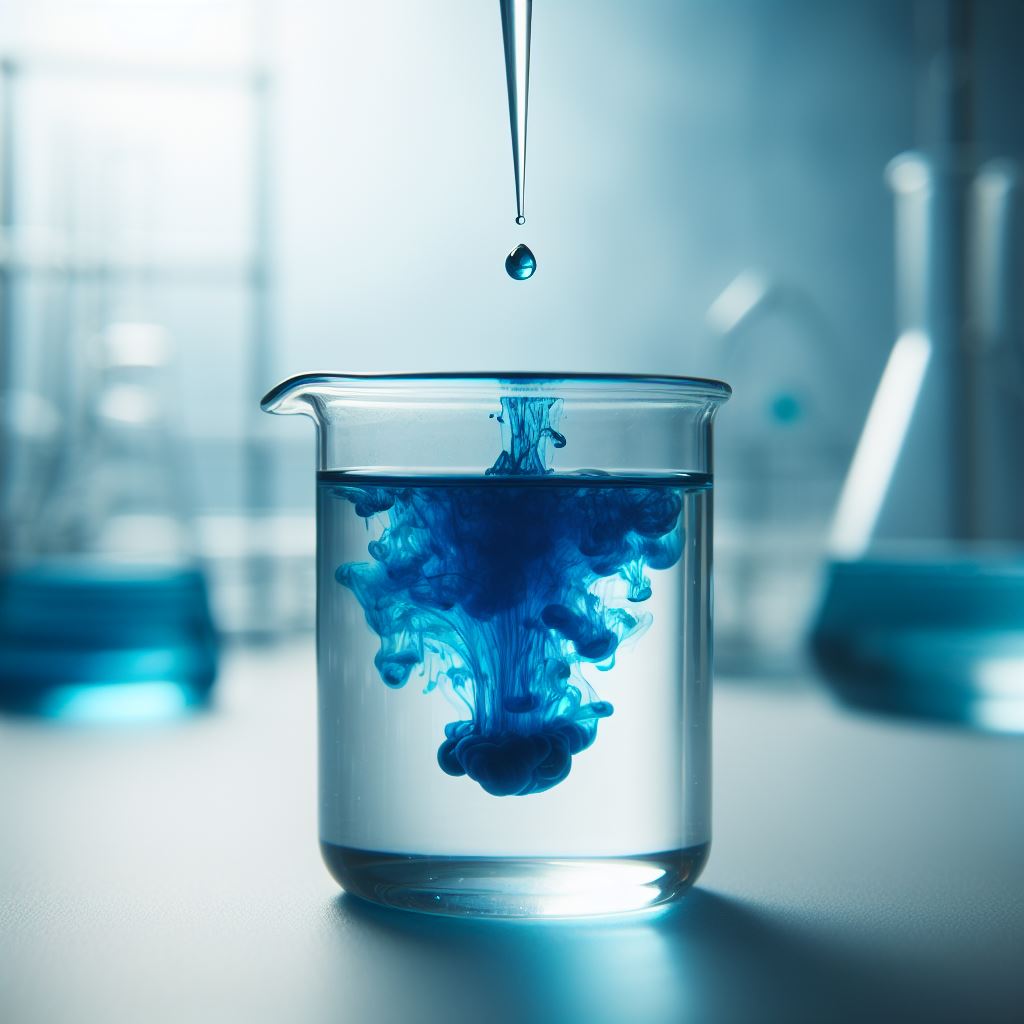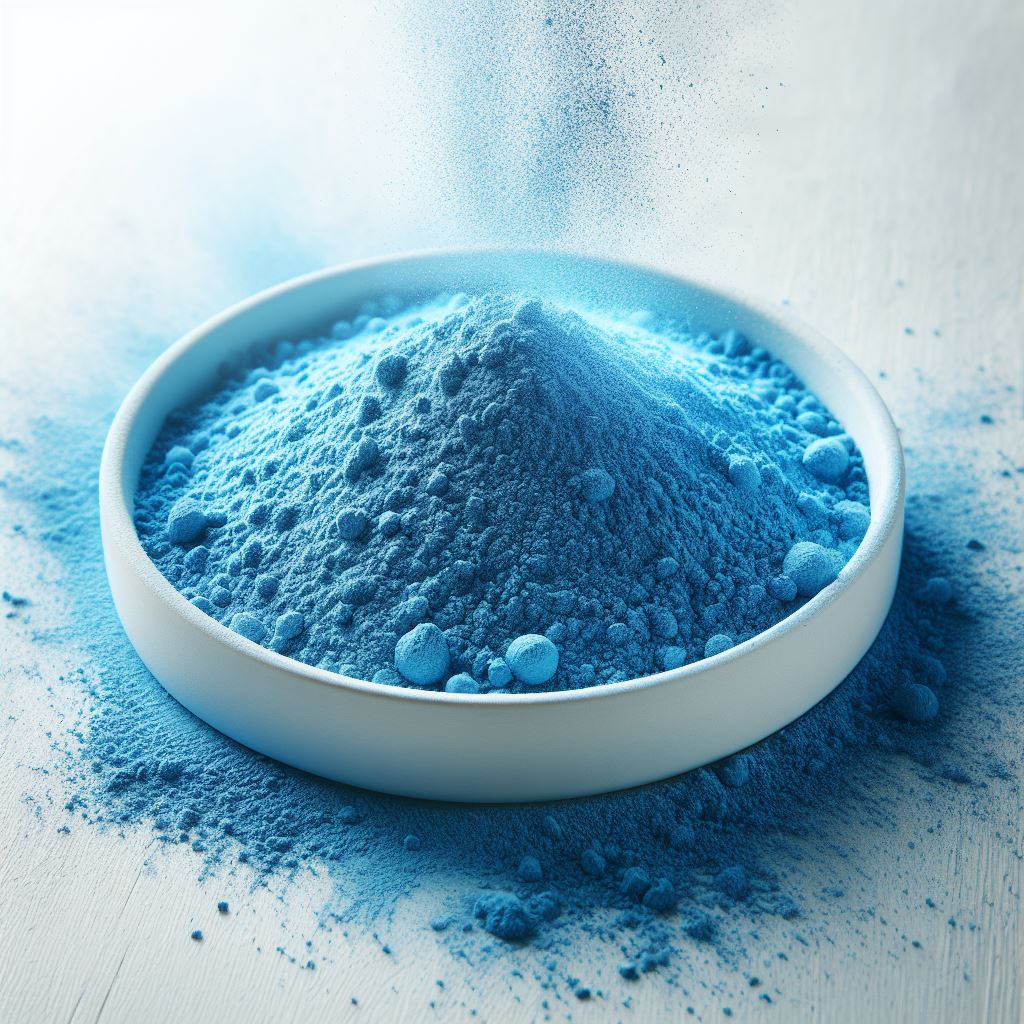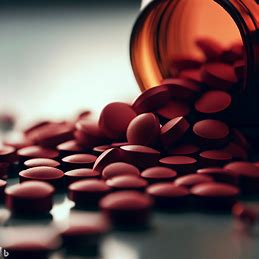Methylene Blue and Mental Health

Methylthioninium, or methylene blue, is a synthetic blue dye that was first produced in 1876 by Heinrich Caro for use in dying clothing and other textiles (Mason 1915). Due to its biochemical properties, methylene blue became the first synthetic drug to be utilized in Western medicine. Initially, methylene blue was prescribed as a treatment for malaria (Lu 2018). A recent meta-analysis continues to suggest potential benefits, with the authors stating that it could be helpful to treat drug-resistant strains of the malarial parasite (Lu 2018).
The Potential Benefits of Methylene Blue
Mitochondrial support
As a drug, methylene blue has effects on the mitochondria, the little organelles inside our cells that produce energy as a molecule called adenosine triphosphate or ATP. The process for producing ATP is complex. However, as a brief overview, ATP is produced by passing electrons from an energy source like sugar through a number of intermediate compounds to regenerate ATP.
Due to the complexity in producing ATP, the mitochondria have many fault points that can disrupt energy production. When ATP production is compromised, the mitochondria often produce excessive free radicals that can damage the cell. As an example, cyanide acts as a deadly poison by blocking one of the electron carriers in the mitochondria, disrupting energy production. When severe, cyanide poisoning can be fatal (Graham 2023).
One of the benefits of methylene blue is through supporting ATP production, helping to maintain cellular energy levels. In the mitochondria, methylene blue can act as a surrogate to carry electrons around blocks or faults in the ATP energy-production pathway. The activity of methylene blue is so powerful that it has been shown to be a potential antidote for cyanide poisoning (Haouzi 2018).
Methemoglobinemia
In the bloodstream, hemoglobin inside the red blood cells carries oxygen to the tissues. Hemoglobin contains iron to allow for the proper binding of oxygen. Yet in certain genetic conditions or from the use of specific medications, the iron in hemoglobin can be “damaged” or oxidized, causing it to lose an electron. When hemoglobin is affected in this way, it becomes methemoglobin (Ludlow 2023). Unfortunately, unlike hemoglobin, methemoglobin cannot carry oxygen effectively. If methemoglobin is present in too high of amounts, it disrupts oxygen delivery to the tissues. In severe cases, too much methemoglobin can lead to death (Ludlow 2023).
As the standard treatment for elevated methemoglobin, methylene blue can rapidly convert methemoglobin back into hemoglobin. This restores proper oxygen delivery, effectively reversing the condition (Wendel 1939).
Neuroprotection
Methylene blue also appears to have the ability to provide neuroprotection or protect brain cells from damage (Poteet 2012). And beyond its effects on improving energy production, methylene blue can also act as a potent antioxidant. Since methylene blue can readily cross the blood brain barrier, these effects may be relevant for helping to protect the brain in a number of different disease states and mental health conditions.
Methylene Blue and Mental Health
Bipolar Disorder
Vanadium, Bipolar and Methylene Blue
Arguably, the best evidence we have of methylene blue’s benefits in mental health is for the treatment of bipolar disorder. In the early 1980s, a group of researchers started to notice correlations between higher levels of vanadium and bipolar disorder (Naylor 1980). Vanadium is an element that is found in foods in small quantities. Vanadium ions can inhibit the tiny pumps in our cell’s membranes involved in sodium-potassium transport (North 1984). The researchers hypothesized that vanadium was causing bipolar disorder by blocking these cellular pumps. Testing of methylene blue in cell culture showed that the blue dye helped to reverse vanadium’s problematic effects (Naylor 1981). As such, the researchers further hypothesized that methylene blue could be a treatment for bipolar disorder.
Clinical Trials and Case Studies of Methylene Blue for Bipolar Disorder
An initial trial in 19 bipolar patients who hadn’t responded to standard medication were administered methylene blue (Narsapur 1983). In the case series, 14 of the patients had improvements with methylene blue treatment.
A case study of a 61-year old woman with severe bipolar disorder found marked improvement with methylene blue (Thomas 1985). She had been treated with numerous medications and shock therapy, all to no avail. Brain surgery was used as treatment and helped for three years before the depression and mania symptoms returned. While in the hospital, she was started on methylene blue and within one month was discharged home. Once she was no longer under hospital care, she stopped the methylene blue and was readmitted to the hospital after four weeks due a recurrence of severe depression. The methylene blue was reinstated and she recovered in three weeks. Upon discharge she continued the methylene blue and over the ensuing six months only had one mild episode each of depression and mania.

A small clinical trial in bipolar patients also found methylene blue to be helpful with depressive symptoms in bipolar patients when taken over the course of a year (Naylor 1986). The study had numerous limitations, however, including the use of a lower dose of methylene blue as a placebo that may still have had benefits, to numerous patients dropping out over the course of the study.
The most recent clinical trial published in 2017 also found benefits (Alda 2017). In the study depression scores showed moderate improvements and anxiety improved significantly over the six-month course of treatment.
Methylene Blue and Depression
A small, three-week trial using lower doses of methylene blue for depression also found significant benefits (Naylor 1987). Patients receiving methylene blue had a 44% reduction in depression scores. For the patients given placebo, there was no significant improvement.
Side Effects
Methylene blue is generally well tolerated, but does have some notable side effects. First, it can discolor stools and urine blue to blue-green respectively. In some patients, it can also temporarily stain the whites of the eyes a blue color if taken in large enough amounts. Other less common side effects include diarrhea, painful urination and headaches (Repici 2012).
For patients on medications that raise serotonin levels, methylene blue can cause serotonin syndrome, a potentially life-threatening condition that can include a high fever (Ng 2010). As such, for patients taking medications for a mental health condition, methylene blue may be contraindicated and should be overseen by a medical professional if used at all.
Most side effects of methylene blue can be limited to a degree by keeping dosing under two milligrams per kilogram of body weight (Oz 2009). Some concerns have been raised about methylene blue causing hemolytic anemia, where red blood cells rupture in patients with a genetic deficiency of glucose-6-phosphate dehydrogenase. However a short-term study in Africa for the treatment of malaria with methylene blue in patients with the genetic condition did not disclose any problems (Mandi 2005). A study in children found a small effect with methylene blue in patients with the genetic deficiency and recommended monitoring carefully, even though the changes were found to be clinically insignificant (Müller 2013)
Conclusion
Methylene blue is a fascinating drug that may have potential for treating mental health concerns, including bipolar disorder. However, like so many other promising treatments, methylene blue needs further research to establish the most appropriate dosing regimen and to confirm clinical efficacy.



